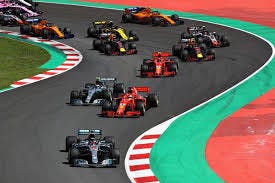Liberty Media Formula One: Masterclass In Capital Allocation
As a long-term investor, I like year/year improvement and a generally longer time horizon for analyzing companies, but when looking at Liberty Media Formula One it’s a necessity. Revenue is extremely dependent on how many races happen and when they happen. Therefore, if Q3 has one more race than Q2, the revenue will be drastically different, but this isn’t an indicator of a true performance change. 2024 was a unique year for the company, the sport’s popularity in the US has solidified more than ever, plans to acquire MotoGP have been put in motion, and the exit of long-time executive and CEO Greg Maffei closed out the year.
New Management
Many, including myself, were surprised by the exit of Greg Maffei at the end of 2024. It is a sad exit as there was much success under his management and separately because he was a “fan” of the newsletter:
However, Maffei’s replacement is no slouch. Derek Chang is the former CEO of NBA China, one of the most successful international sports expansions into China. When looking back to the acquisition of Formula One by Liberty Media, they identified the US and China as the two most crucial growth areas for the sport. US growth has clearly taken off, especially in recent years, much of this growth was spurred on by the Netflix series Drive To Survive (The newest season of the TV show came out on Friday and I highly recommend it). Now China is the clear next priority.
Vertical Integration
The fans are the customers.
Liberty Media has developed a comprehensive vertical integration for the sport of Formula One. They own the streaming, sponsorships, ticketing analytics, licensed merchandise, livery/launch events, and have even built out other ways for fans to engage (i.e. F1 Arcades, Drive To Survive Series, and Lego partnership). The Las Vegas Grand Prix was the first venture into a fully owned race weekend, including the track, hotel partnerships, promotional events, etc.
Strategy And Tactics
When looking at long-term investments, I like to see how they think about strategy versus tactics. Strategy is the higher level goals and structure of a plan, and tactics are the execution and lower level ideas. Both are important, but it is important to differentiate. For Formula One, their strategy is based on engaging a high number of fans internationally, this includes hosting as many race weekends as reasonably possible, and having other outreach/engagement opportunities like streaming availability, F1 Arcades/Franchises, and related media and products. Within this, the tactics include maximizing value from each race weekend by boosting sponsorship fees, increasing racing events (Sprint Races), and making the race weekend an experience beyond an event.
At the beginning of 2024, Liberty completed its acquisition of Quint, a service that turns events into complete experiences. Quint organizes travel logistics, itinerary, accommodations, and more. This fits right into the company’s overall goal of making races more accessible and engaging fans throughout the experience.
Capital Allocation
It is no surprise that a company with John Malone as chairman is a clever capital allocator. The company is currently in the process of completing the acquisition of MotoGP, a high-performance motorbike racing league with many of the same attractive attributes as Formula One. MotoGP has a similarly highly engaged avid fanbase, and high-speed action-packed races. Additionally, races typically last around 45 minutes, which is a better fit for the continually shortening attention spans of fans these days compared to the typical 2 hour long Formula One races.
The strategic acquisition of Quint as a way to inorganically build out event offerings is another example of a clever capital allocation move. Then to turnaround and spin this along with the Live Nation holding into its own company is a classic John Malone style transaction. Meanwhile, the RemainCo consists of Formula One, the pending 86% holding of MotoGP, and holdings in the Colorado Avalanche and Denver Nuggets.
Streaming
ESPN signed a deal for the broadcast rights of Formula One from 2019-2022 for $5mm/year. The deal was re-signed for $90mm/year until 2025. That deal is estimated to be re-signed again for over $100mm/year. This deal is just for US broadcast rights. There are separate deals for Europe and beyond with SkySports being a major player in that arena. Formula One also has F1TV as its own streaming service. This allows them to reap more benefit from growing popularity as streaming is the increasingly dominant viewing medium for this type of media.
This company has a lot of growth opportunities going forward and is already bracing itself for more growth in the coming years. The moats are large and the ability to receive value from the strong fanbase is ever increasing. Meanwhile, adding another league (MotoGP) and using strategic capital allocation sets Liberty Media up for an exciting future.
Until Sunday,
Soren




